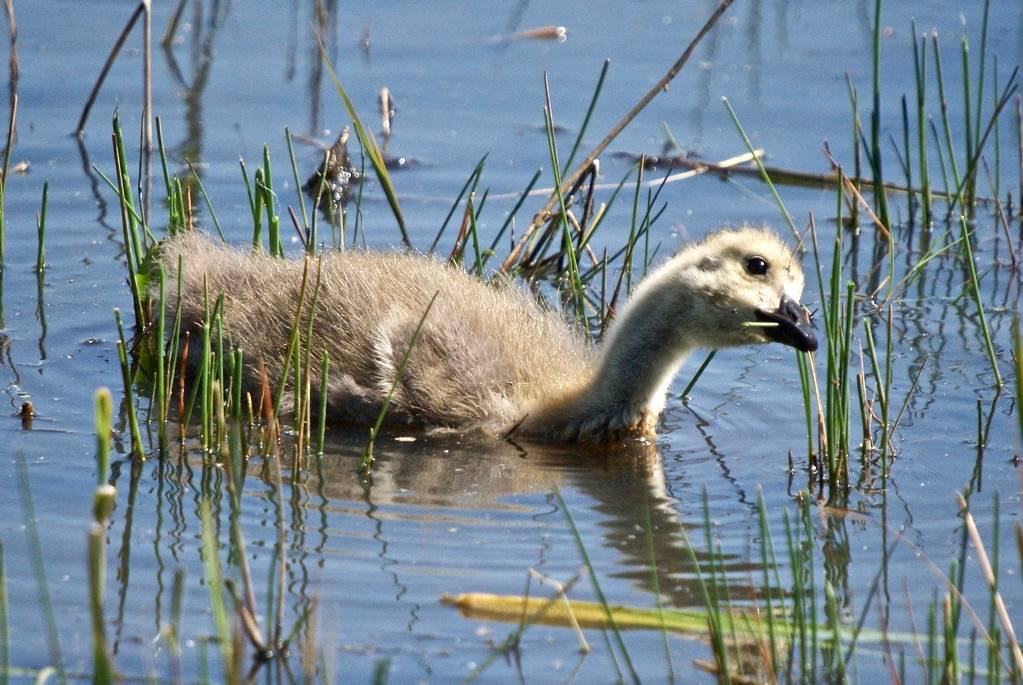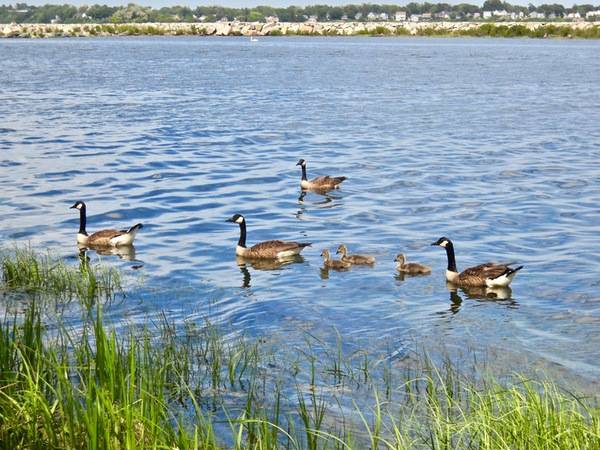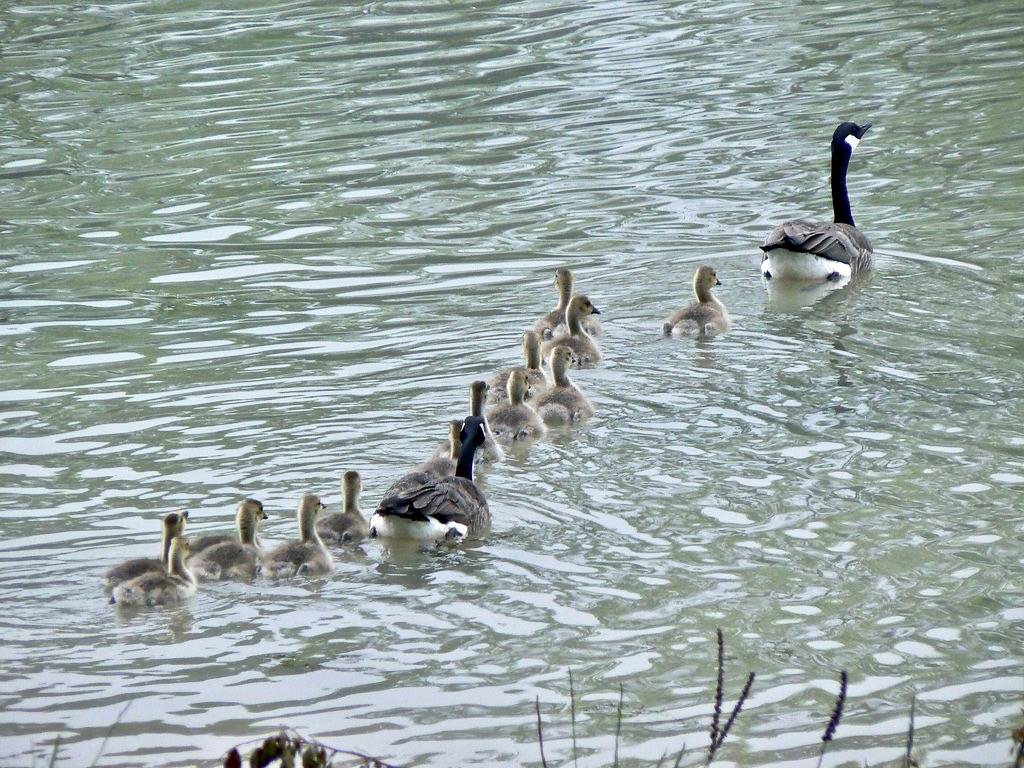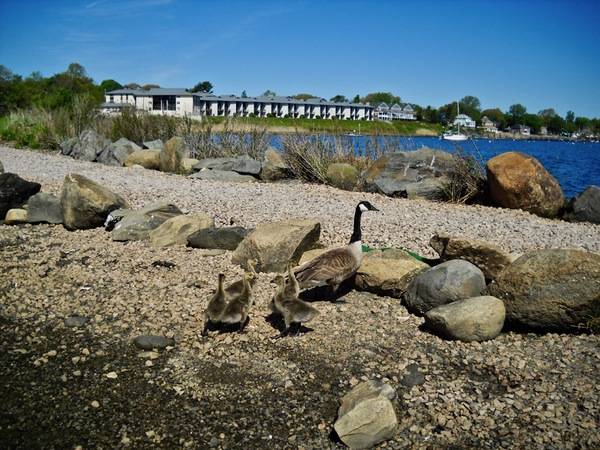Canada Goose
Canada Geese have been seen every month of the year at Salter Grove. From January through April they associate in small groups in the coves north and south of the causeway.
Pairs that are formed for life break away from their winter companions to establish a nest site each spring. The female selects the nest site and builds the nest and may lay 2-8 eggs. Only a few families with 2 to 5 goslings have been observed at Salter Grove during May and June in any one year, suggesting that suitable nesting habitat may be limited in the park.
It is herbivorous and feeds primarily on grasses and seeds. The increase in lawns and golf courses and agricultural practices that leave behind waste grain have greatly expanded their habitat and food supply. Many North American populations of Canada Goose now stay put throughout the year rather than migrate northward to breeding grounds or southward to wintering grounds.
The Canada Goose is native to the arctic and temperate regions of North America. It has been successfully introduced to other temperate countries in Europe, Asia, and South America. Unfortunately, its tendency to form large flocks in grassland and parks producing copious droppings, and aggressive behavior during the breeding season have led to its status as a pest species.


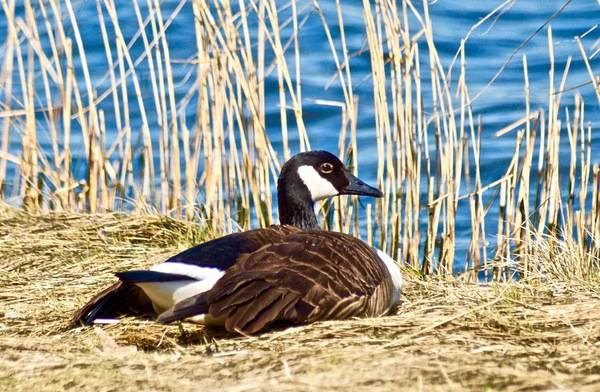


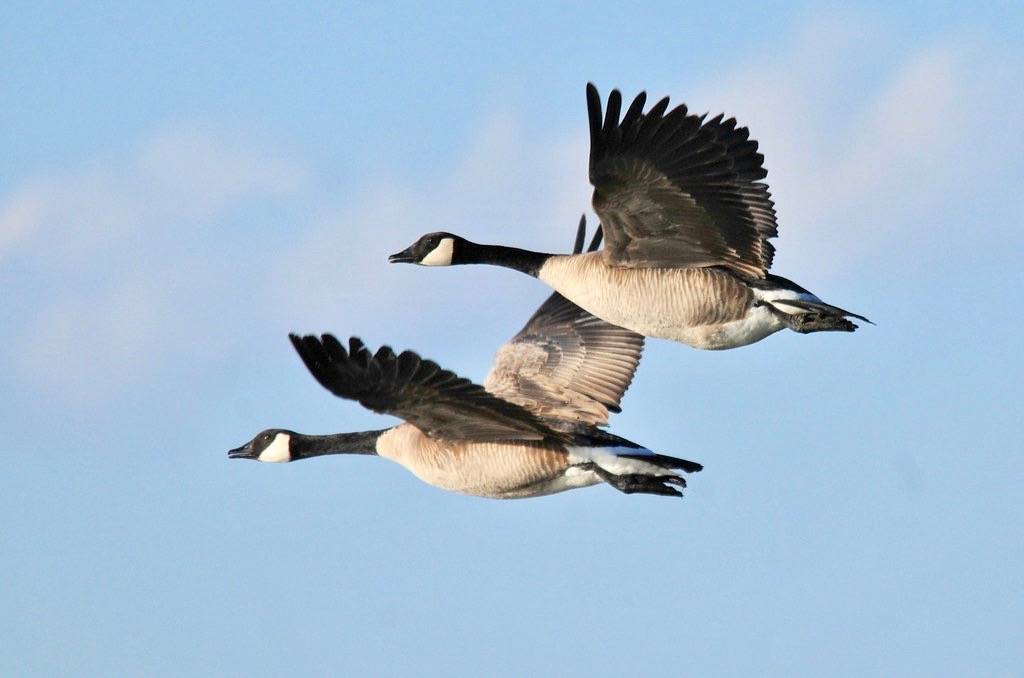
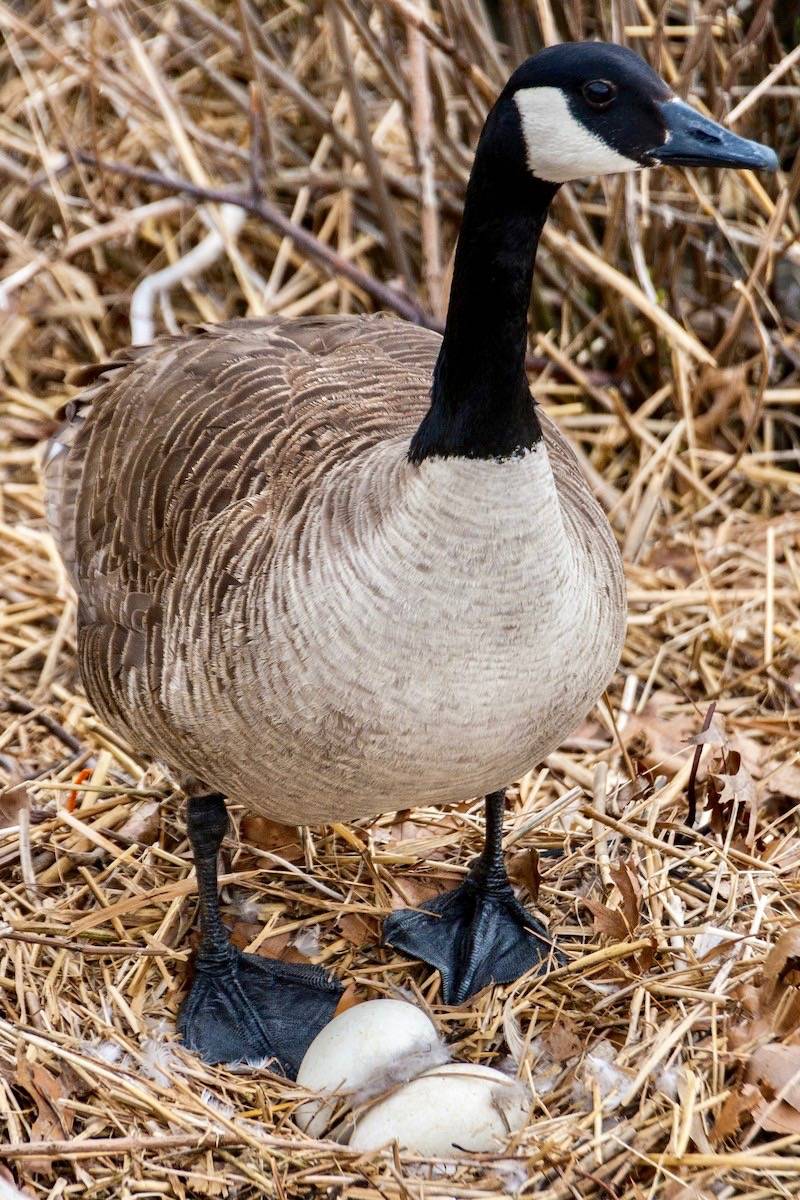
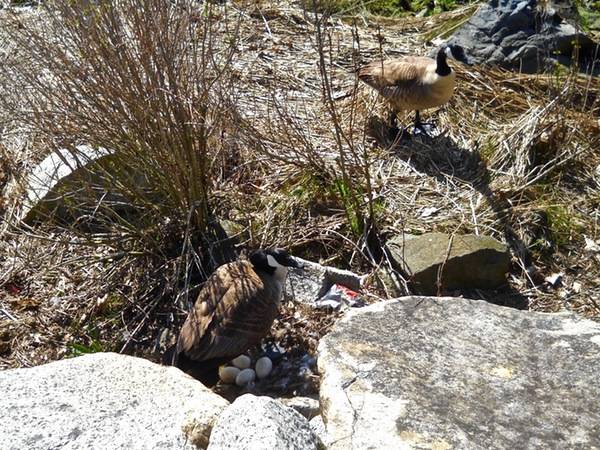

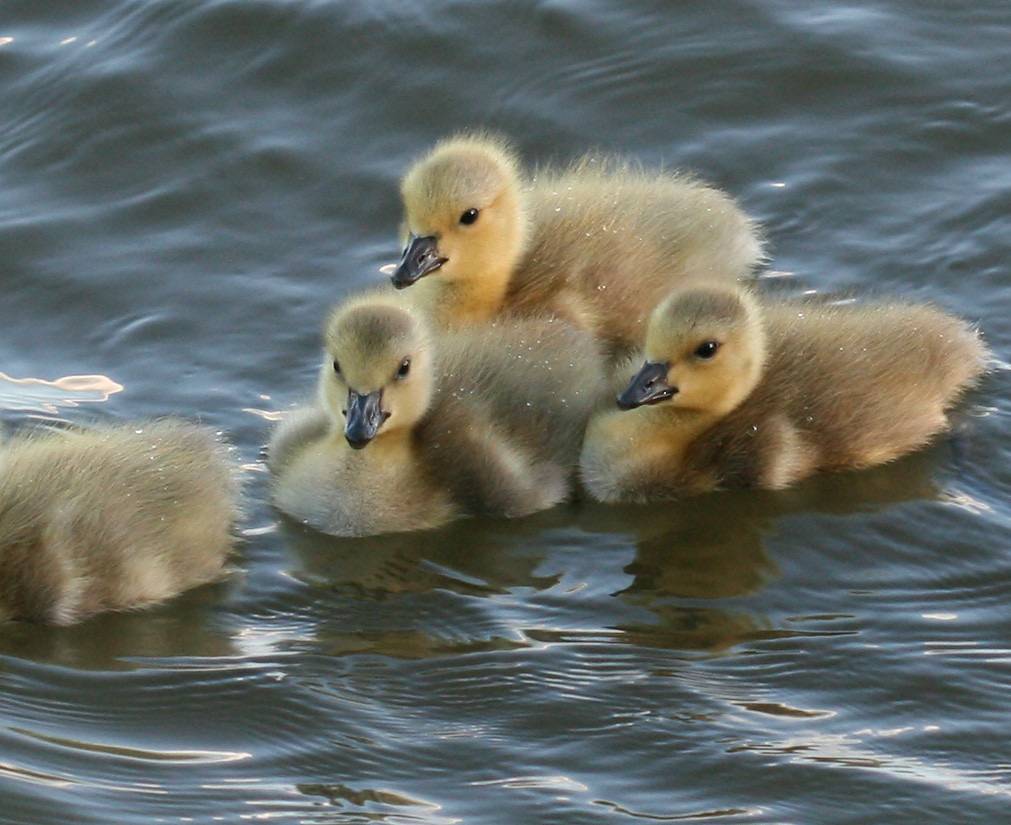
.jpg?w=350?blur=10)
